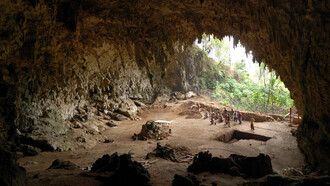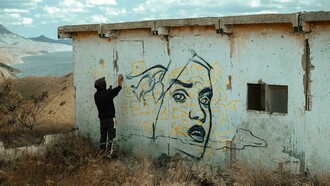Do you know who Edmond De Belamy is? It is one of the most famous works of art of the last few years. Sold for 432,500 $ at a Christie's auction in 2018, it managed to catalyze media attention on the relationship between Art and Artificial Intelligence.
Edmond was created by Obvious, a French collective of three young “friends, artists and researchers”: Pierre Fautrel, Hugo Caselles-Dupré and Gauthier Vernier. We con-tinue with them to explore the interactions between Art and Artificial Intelligence.
I would like to start with the most challenging question: what is art for you?
That is a very difficult question indeed. We really like the idea that art can’t be properly defined as it is a notion which resonates differently in each one of us. Through our work, we are also trying to ques-tion and push the boundaries of art. Nevertheless, we are very attached to the emotional side of art, as it is to us a way to convey emotions, either through the creation process or the end result.
How was Obvious born?
Obvious is a friendship story. We founded it back in 2017 when finishing up our studies, but we have known each other for the longest time. We decided to start this creative project when discovering the creative potential of deep learning algorithms, thanks to Hugo, one of the members of Obvious who happens to be an AI researcher. We started by questioning the relationship between art and science and the human-machine relationship through a series of classical portraits created with Generative Adver-sarial Networks, and kept on working in exploring algorithmic creativity and questioning the use of AI in our society ever since.
You work with AI and machine learning and you declare in your Manifesto that you “wish to demonstrate that algorithms help us complete our understanding of how we function as humans, and push us to outsmart our current level of creativity”. Could you clarify what you mean?
On the one hand AI algorithms are built in order to replicate and optimize human behaviors. On the other hand, we have trouble understanding how the brain works and the mechanisms linked to crea-tivity within it. Our assumption is that trying to replicate creativity can help better understand it, as it forces oneself to try to understand the process and factors taking place when creating. Moreover, we believe AI can push us to outsmart our current level of creativity as it provides new tools and possibili-ties for creation.
How do you work with GANs? Could you briefly describe your creative process?
When working with GANs, we start by selecting a subject we want to address and a message we want to send out. Then, we gather data by building partnerships with institutions, or by finding free of rights images on the internet. After that, we train our algorithms and through a process of iteration, with mod-ifications in the database as well as the algorithms parameters, we create the visuals. After that comes a phase of selection of the visuals that best reflect our subject and intention. Then, we select a medium for the final artwork, which can be either physical or digital.
Is there any potential of GANs that you have not fully explored yet?
Surely there is! GANs are a relatively new tool, and we believe the creative possibilities when working with these algorithms are nearly endless. For example, we recently crossed different types of data with similar features, tricking the algorithms into thinking they are the same kind of images, and resulting in new and unique visuals at the crossroads of both types of data (i.e., flowers and butterflies, pictures of the earth from above and fluid painting). This is only one of the many derived ways GANs can be used, and we hope for some more artists to help us in finding them!
Could you describe a work and/or a project you are particularly fond of?
One project we are currently working on is a series of artificially created dreams. We worked with dif-ferent types of algorithms. One that allows the creation of text from the beginning of a sentence (i.e., “Last night, I dreamt of…). Another algorithm that allows the creation of an image based on a text. Us-ing this combination, we created 1000 artworks depicting the dreams and nightmares of AI, which will soon be presented in the form of NFT artworks. We are fond of this project as it is a further step in exploring algorithmic creativity.
Who is Marianne?
Marianne is the representation of the values of France. A new representation of Marianne is selected every 5 years in France, and we decided to offer our own version. In this project, we invite French women to send us their picture through a dedicated website, so we can train GANs to create a new rep-resentation of the French woman based on their inputs. We came up with this project when we realized the potential to create an icon with GANs, a unique picture which would be representative of many.
Is artificial intelligence significantly changing artistic practices?
We believe artificial intelligence is creating a new branch in art. While existing artists are starting to work with these new tools, new artists have found their means of expression with this technology. We believe it won’t replace the existing artistic practices, but that it will rather add a new and interesting approach to art creation.
…And what about NFTs?
NFTs have allowed the digital art world to finally have a market, by allowing the certification of ownership of digital assets. We have been in the NFT space since 2018, and we have seen the market evolving. It is to us an extremely interesting adventure, as we see and participate actively in the emergence of a new market with new collectors, institutions, and actors.















